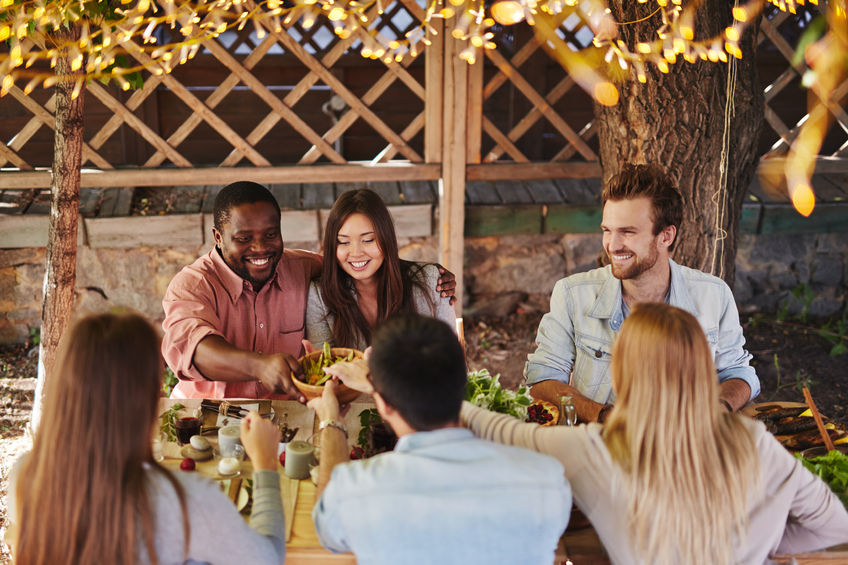For the better part of this year, I’ve been more out of my yoga practice than I have been in it.
This happens sometimes. For one reason or another, I fall out of my practice. Sometimes, I avoid it because I know the power yoga has to bring deep thoughts and emotions up to the surface. Other times I tell myself I’m too busy. Mostly, when I’m away from my mat it’s because I’ve prioritized the gym, hiking outdoors, or some other type of activity.
Each time I stray from my practice the same thing happens; I notice the aches in my shoulders and neck, how I quickly react to others, and a feeling of disconnect and discontent. This is not who I want to be. So, I know it’s time to begin again.
Returning to yoga has sparked a revision of my habits across the board. What I didn’t realize, is that my time away would give me profound perspective on what it means to have a conscious practice.
The habits you choose are the things that lift you up and create steady ground for you when you face difficulty. Your practice creates your resilience.
My Truths from OFF the Mat
“Practice is the performance of a dedicated precise set of acts, physical or intellectual, from which comes shape of achievement, a sense of one’s being, a satisfaction of spirit. One becomes, in some area, an athlete of God. Practice means to perform, over and over again in the face of all obstacles, some act of vision, of faith, of desire.” – Martha Graham
Practice reminds us that we have a goal, and creates space for us each to embody who, and how, we need to be in order to reach it.
For anyone with a goal to maintain healthy eating throughout the year, your practice involves gathering healthy recipes, grocery shopping and preparing food on a regular basis. These simple acts cause you to embody who and how you need to be to reach your health goal.
Miss a meal or a trip to the grocery store? If this happens often your body will let you know through weight gain, hunger, or digestive troubles, that you’ve strayed from your goal. It’s time to return to your practice.
This happens time and again for me with yoga. Tightness in my shoulders, shallow breath, and back aches signal to me that I’ve strayed from my yoga practice.
Doing yoga also allows me to be present with my thoughts and reflect on my true feelings. Each time I leave my mat, I am much closer to the version of myself that I wish to be (calm, centered and open). In this way, my yoga practice keeps me in line with my physical and mental goals.
My practice reminds me of my goal—if I didn’t have yoga rituals, there would be nothing for me to stray from, or return to.
Practice gives us the chance to show up and be who we are without fear of judgement or shame.

It lets us off the hook for not being perfect. It creates the understanding that we’re not striving for perfection. Flawless execution is not even part of the goal.
When you approach your way of eating, physical activities, or relationships as a practice it allows room for more compassion; with yourself and others. Just think, if you didn’t have expectations of your partner, parents, or colleagues how you would show up differently in your relationships with them? Would you find it easier or more difficult to love what is?
When the goal is to be in (living, surrendering and fully experiencing) the practice, there is more room to be playful, to laugh at yourself and to continue returning to the task each time your mind wanders, or your body strays. No judgement, it’s practice.
Knowing this makes it easier to return to my mat, my morning smoothies, or to take time to meditate. When I release the stress around living up to my ideas of perfection (particularly if I’ve been distracted from my goals) and fully embrace whatever shows up in the moment. This opens much more ease and wonder in my life, and is part of my practice of self-compassion.
Practice continually evolves.
As you learn and grow, new knowledge and skills are added, and your practice takes a different form. A child taking piano lessons builds on his breadth of knowledge and dexterity to play more complicated pieces of music.
It’s the same with building a foundation for wellness in your life. As you learn about new foods, cooking techniques, and exercises, your habits (and taste buds) evolve to accommodate them.
New possibilities emerge the longer you stick with your practice. Flexibility is gained, new insights are uncovered, and unacknowledged feelings emerge. No matter what the activity, it is through these actions that you return to, and become more of, yourself.
I’ve learned, over the years, from my journey to be the healthiest version of myself (emotionally, physically, mentally) that no matter what form my wellness practices take, I’m better for having them. There is a sense of accomplishment each time I master a new recipe, hold a balance pose, or speak my truth with courage. I witness my skills compound into new successes. As I live out these habits, I witness my own evolution.
Practice can be done for the sake of practice. It is an end in itself.
The beauty of having a practice (whether it’s yoga, a sport, or meditation) is that there is no grand finale you’re working toward.
Often, we take up a practice for the benefits we perceive it offers. However, the benefits we find most valuable are usually the ones we discover along the way. A new runner might see running as a way to develop long, lean muscles, a slim waistline, or burn extra calories, only to learn that running outdoors offers connection with the Earth, alone time, and a blissful meditative state.
Similarly, what started out as a means to heal my digestion, my yoga practice has evolved into a regular ritual and taken root in my life’s work as I teach others.
Practice can be in community or a solo journey.

In all areas of life, our habits are reflected back to us when we see ourselves in others. The girl who reaches her first pull-up at the gym, your co-worker who walks on her lunch break, yes, even the guy yelling out his window in traffic may be a reminder of how you’ve showed up at one time or another. The point is, we can learn from each other’s successes and mistakes. As we cheer others on, we’re inspired by what we may one day accomplish.
Community also offers the opportunity to teach the skills we earned through practice. In this way, practice is a cycle of evolution.
I savor the community in yoga studios, and have taught many classes where beginners and seasoned yogis were mixed into the same room. Being in community reminds me of where I’ve been, and where I’ve yet to go. Seasoned students show me where my practice could take me. Beginners remind me of how I fell out of tree pose several times before I learned to stand tall. Through the mirroring of others, I see my accomplishments.
Practice is pervading, showing up in every area of our lives.
I speak a lot about yoga, because it is a practice I choose to continually evolve within. But really, practice shows up in all areas of life:
Your morning routine; a practice.
The thoughts you think when you look in the mirror: a practice.
Staying in, and living from, a place of love in your relationships: a practice.
Listening instead of reacting defensively; a practice.
Loving and accepting your body exactly as it is: a practice.
Meditation,
Yoga,
Eating healthy food,
Practice. Practice. Practice.
What will you choose to practice?
When we look at the many activities in our lives as a practice, we can let ourselves off the hook for the times when we fail to show up as the best and brightest versions of ourselves. If we regard our lives as a practice, all truths apply. Our endeavors give us the space to accept ourselves and our shortcomings; teaching us to return to the craft each time we falter.
Know that it’s never too late to start, or return to a practice. Even if it’s been months, or years even, sometimes space is necessary for perspective. If it’s something you love and believe in, pick it back up.
Have compassion for yourself as you try new habits on. Remember that there is room for growth and imperfection. Let yourself off the hook.
Most importantly, love yourself enough to try. Not just once, but day after day, even when you stumble. It’s in repetition that you grow, evolve and become resilient. Find a way to love the evolution of your craft, for in its evolution, is your life.
There is no dress rehearsal. Each moment is real, each action tangible, potent and fleeting.
And it’s all a practice.
Are you looking to sharpen or develop your practices of healthy eating, mindfulness, or yoga? The Eats & Asana 7-week nutrition and yoga course is an excellent opportunity to review your current practices, and adopt new ones that better serve you and your goals. You’ll be part of a loving, supportive community of others who are looking to do the same thing. Find out more here





